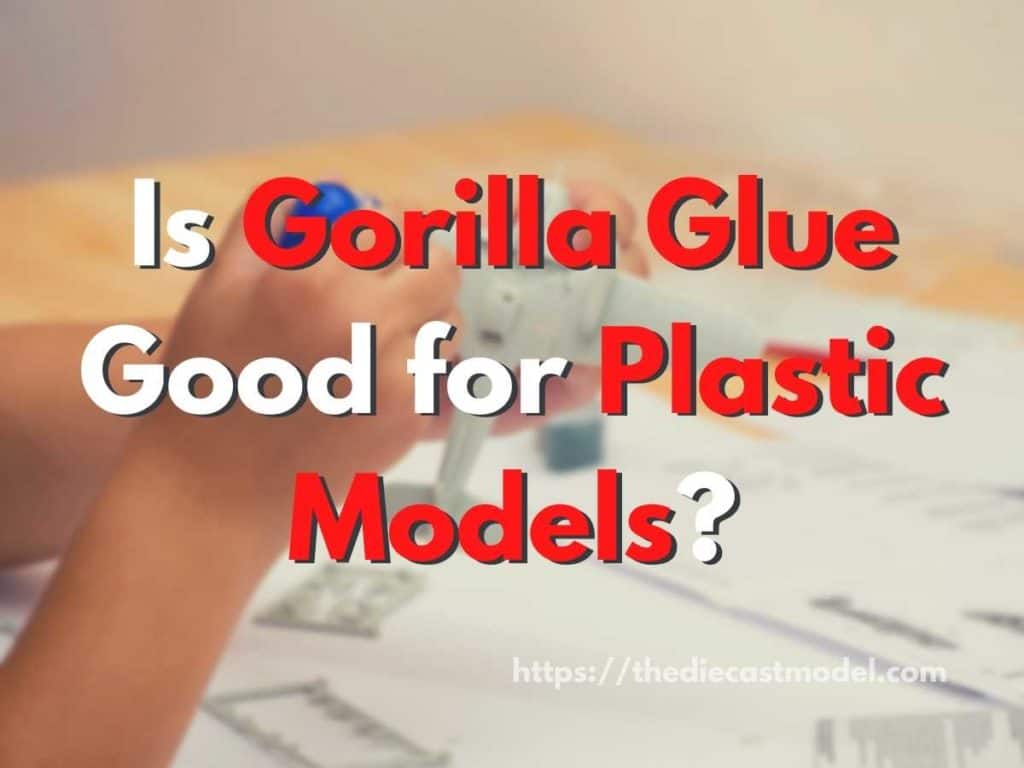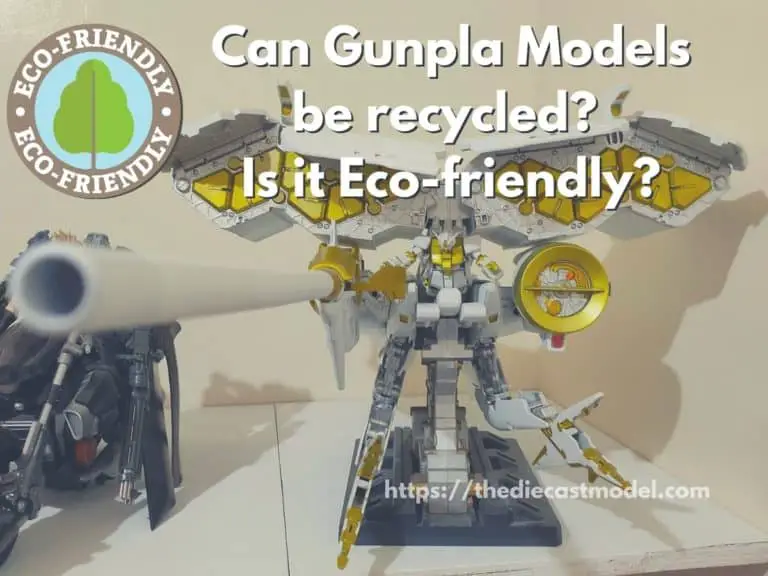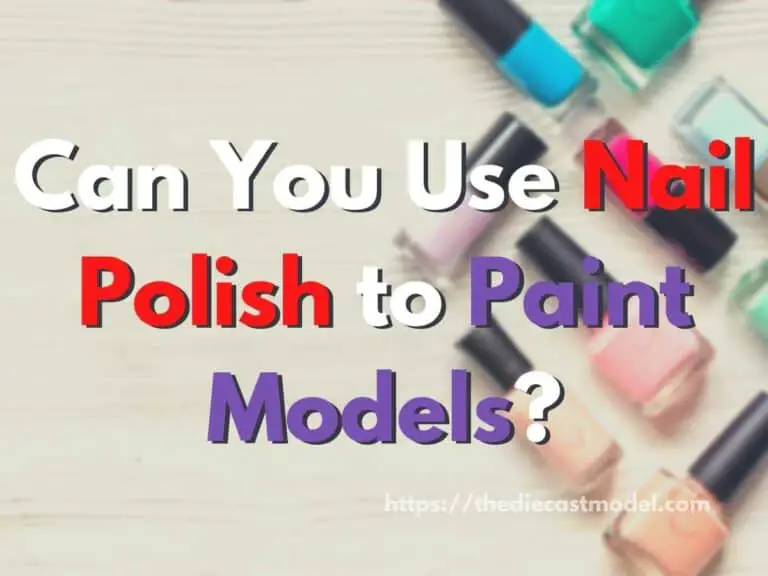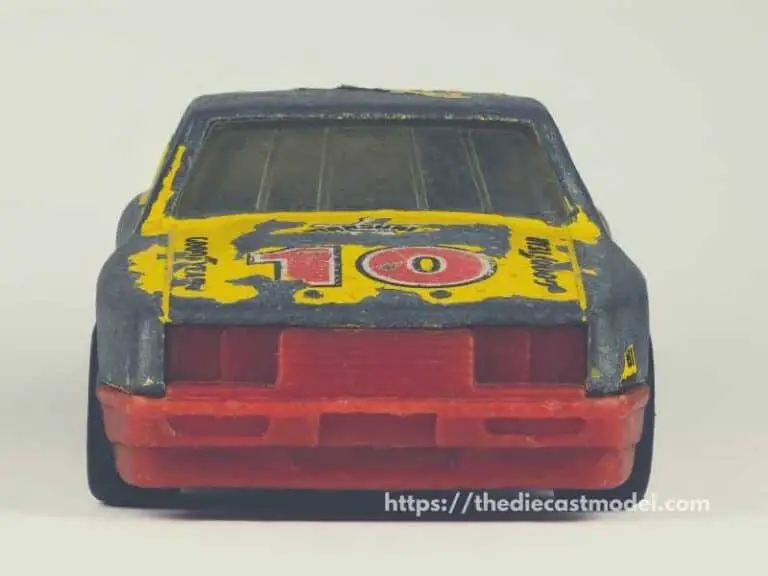How Good is Gorilla Glue on Plastic Models?
One of the common glues we can find in stores is Gorilla glue. Thus, it can be tempting to use Gorilla glue to build our plastic model kits. However, is Gorilla glue strong and designed for plastic models? If it does, what are the precautions we need to know when using it? This blog post is designed to show you how good the glue is and if you can use it on model kits.
Is Gorilla Glue good for plastic models? As a general rule, Gorilla glue is not good for plastic models because of its color-changing and foaming characteristics. While Gorilla glue can be used for polystyrene plastics such as plastic model kits, it produces too much heat when drying, which leads to foams that aren’t ideal for gluing plastic kits.
This blog post will show you the pros and cons of using Gorilla glue for plastics. We’ll also see what type of plastics don’t work with the glue. Finally, I will give other glue options you can try other than Gorilla glue.

Is Gorilla Glue good for plastic models?
Gorilla glue can be used on plastic models because plastic model kits are made out of polystyrene plastics, which the adhesive can hold without problems. However, Gorilla glue is not ideal for plastic model kits because it changes color, foams and is messy while drying, making the glue the last option for modelers.
The iconic Gorilla brand, made in the United States, is well-known worldwide. Gorilla Glue is the company’s most renowned adhesive product, although they also make a variety of other adhesives.
Gorilla glue is extremely strong and should be used mostly outdoors on wood, metal, and plastic surfaces because it is weather-resistant and waterproof.
Gorilla glue’s holding power on unexpected surfaces like stone or glass has made Gorilla a household name.
Furthermore, Gorilla glue is an adhesive that foams and expands as it hardens, ideal for covering large areas.
However, since it expands as it dries, it is hard to use Gorilla glue on plastic model kits where accuracy and precision are necessary.
Polyurethane glues like Gorilla glue expand upon application to fill in any gaps and imperfections in the surface material, resulting in a powerful bond between two objects.
Gorilla Glue is comparable to two-part epoxy in that it can glue a wide range of surfaces and may be used for a wide range of applications.
Because of Gorilla glue’s power to fill gaps, it may be a good choice for plastic model kits. However, keep in mind that Gorilla glue tends to change color and expand when drying, which can destroy the look of your models.
Furthermore, Gorilla glue is prone to foaming, reducing its bonding power when used on plastic model kits.
However, the good thing about Gorilla glue is it works on almost everything.
All kinds of surfaces can be treated with Gorilla glue, from wood to stone to plastic to glass to ceramics to brick and metal. The glue sets faster than most epoxy-type adhesives and is sanded, drilled, painted, or stained (unlike most two-part epoxy).
Gorilla Glue is waterproof and can resist temperatures ranging from -40°F to 200°F (-40°C to 90°C).
Due to its extreme weather resistance, Gorilla Glue is ideal for external jobs such as landscaping or building projects that require an adhesive that will not be harmed by rain, snow, freezing temperatures, or blistering sunlight.
Upon drying, Gorilla Glue takes on a light tan/light amber tint. This is a problem when dealing with plastic models since we model kits prefer glues that dry clearly.
Depending on the project, you may pick a clear or colorless cured glue. A clear variant is available from Gorilla, which dries with the same strength and versatility as ordinary Gorilla Glue.
It is advisable to use colorless cured Gorilla glue for plastic model kits.
Gorilla glue is a water-activated Polyurethane based glue, and this type of glue comes with a set of advantages and disadvantages.
While Gorilla glue can endure high temperatures and can be used on practically anything and everything, it must be clamped for a few hours to allow the adhesive to cure, making it less handy for tiny repairs than Super Glue.
Polyurethane glue reacts exothermically with natural fibers like wool and cotton, so you should avoid using it on those materials. Expect the same reaction as with carbon fiber or fiberglass.
Too much adhesive can cause your fabric to catch fire and burn the material. There’s a good chance that even if the cloth doesn’t get torn, you won’t go very far with it. Fabrics should, in my opinion, be glued together with E6000 glue.
That’s a problem because Gorilla glue’s reaction is exothermic. Unfortunately, not all plastics can work with exothermic glue since it can deform or melt the plastic.
Generally speaking, Gorilla glue is not recommended on polypropylene and polyethylene plastics. The good news is, most of the plastic model kits are made using polystyrene. This means you can use gorilla glue with plastic models.
However, plastic glue or cement is still better than gorilla glue when used on plastic models since they’re designed to be used on plastic kits.
With a starting price of around $1/oz, Gorilla glue is more expensive than comparable wood glues, and of course, pricier if you consider it for plastic models.
Besides, Polyurethane is highly flammable. As a result, Gorilla glue is one of the worst glues for filling gaps because it expands when drying and has foaming characteristics.
Due to this, a final sanding may be necessary after the Gorilla glue has been set. And, it’s a sticky mess that’s a pain to clean up.
As a result, people choose to use Gorilla glue on plastic models only when the conditions are ideal.
I made a blog post comparing superglue to plastic glue. As a modeler, it is good to know if you can use superglue if you don’t have plastic cement. You can find the blog post here: Superglue vs. Plastic Cement on Plastic Model Kits.
What is the best glue to use on plastic model cars?
The best glue to use on plastic model cars is plastic cement because it dries quickly and clearly while providing a strong bond. Furthermore, plastic cement is ideal for sticking small parts because it can reach tiny cracks and surfaces. These make plastic cement an ideal choice for beginner and experienced modelers.
However, since modelers can have different preferences, they can prefer another type of glue.
A good starting point is to find a glue compatible with plastic.
It is essential to read the instructions on the glue label to see what surfaces it is suitable for and how to apply it correctly.
If you want to get the greatest results, stick to the manufacturer’s instructions.
Various types of strong glues developed for plastic, including cyanoacrylate (Super Glue), model cement/plastic cement, and epoxy.
1. Model cement/plastic cement
Model cement uses solvents such as butanone, toluene, or dichloromethane (DCM) to melt plastic and fillers such as polystyrene to weld the plastics together.
Because of this method of bonding material kits, model cement is only effective on plastics.
It is incompatible with metal, wood, pottery, stone, and concrete.
As the name implies, this glue is widely used to join plastic components while creating models; it is also used to join ABS pipe together and plumbing with PVC pipe.
Most modelers prefer using plastic cement on their model kits.
For example, I always use the Tamiya regular or extra thin cement when making my builds. They are very convenient and work in almost all model kits.
Furthermore, they dry fast and are clear upon drying, which is ideal for achieving a perfect finish.
However, it would be best to understand when to use regular and extra thin plastic cement as a modeler. Don’t worry because I prepared a blog post you can read about that topic here: Tamiya regular vs. Extra thin cement.
2. Superglue
Cyanoacrylate (often called “Super Glue”) employs anionic polymerization to form a chemical bond when it encounters hydroxyl ions in water, unlike other adhesives that rely on evaporation.
To put it simply, this means that Super Glue only needs water to adhere to the material.
Using Super Glue, you can stick just about any surface together because of the moisture present in the air.
For applications like vehicle body repairs, use sandpaper to scratch smooth plastic before using Super Glue for best results.
As a reminder, cyanoacrylate can discolor or deteriorate plexiglass windows; thus, it isn’t the best glue for that purpose.
3. Epoxy
Epoxy typically comes in two distinct tubes with separate or joined plungers, depending on the brand.
A resin and a hardener are in separate tubes.
Once the resin and hardener come together, they form a strong, long-lasting, water-resistant bond when the tubes are placed onto a surface and joined.
Epoxies are ideal for metal, ceramics, rubber, wood, and some plastics.
It can take up to two hours of clamping, 12 hours of drying, and one to two days for some epoxies to properly cure, while others can heal in as little as five minutes.
Epoxies are incredibly adaptable when used appropriately and can be found in various industries such as electronics, medical equipment, and aerospace.
Modelers also can rely on waterproof epoxies for bigger models like ships and airplanes.
Final thoughts
When deciding on glue for plastic models, consider the factors I’ve given in mind. Furthermore, determine the materials you will be working with to make the right choice.
For the best results, follow the manufacturer’s instructions.
Always use high-quality glue to ensure long-term results. It’s better to use a high-quality adhesive when you’re working on pricey stuff like giant ship models, airplane models, or model cars with hundreds of pieces.
What’s next? Do you know the future of model kit building? Is the hobby still popular? What are the challenges of the model kit industry? If you’re interested in learning these, feel free to check this blog post: Are plastic model kits still made?

“Only the things I love”
thediecastmodel.com is reader-supported. When you buy through links on the site, I earn an affiliate commission.
So, here are the things I love when taking care of my Diecast Models.
Cleaning the Models
The first we are going to talk about is cleaning the models.
Removing Dust
- Air Brush – For me, this is the best since it not just removes dust but you can use it in painting/clear coating.
- Air Duster – This is a good alternative to Airbrush
- Normal Brush – If you are short on budget, you can use a normal brush. However, make sure that the brush has soft bristles because there are some hard brushes than can cause scratches. That’s why I recommended a good brush that can do the job properly.
Cleaning and Shining Hacks
Well, here are some of my cleaning hacks for removing scratches, oxidation, and so much more.
- Removing Decal Adhesive – Use Goo Gone on those hard-to-remove decal adhesives. It works fast and works like charm!
- Waxing and Polishing – Here is something a lot of people don’t know. Waxing protects the clear coat and paint while polishing shines the model. Instead of buying it separately, use a 2 in 1 to save money. Get this instead.
- Beginner Wax – The wax I recommended earlier is good and provides the best results based on my experience. But a beginner might have a problem especially if they’re not good at applying wax. Solid wax reaching hard to reach surface can be hard to remove. You have two choices here. One is to use a qtips to reach those surfaces, another is to use a liquid wax I recommended.
- Cleaning Wheels, Rubber, Plastic – Do not forget that rubber and plastic surface are quite different, especially in the cleaning process. Just wiping it down won’t do the job. That’s why I use Meguiar’s Vinyl and Rubber Cleaner and Conditioner. Works like charm!
- Make the Wheels Shine! – Making our models look good won’t be complete without tiny details such as shiny wheels! Do not forget this because however small this is, the difference can be as big as night and day.
- Remove Scratches Easily – Tiny scratches are not the end for your model. Here is a simple trick I’ve been using to make my models look scratch-free even without repainting. Use T-Cut.
Painting the Models
Painting Tools
Make sure when you paint models, have these ready.
- Tape – A tape is important if you are painting a straight line. Furthermore, it will prevent your paint to scatter on other parts. I recommend Tamiya Tape since it is really made for models. Furthermore, they stick really well preventing paint splatters.
- Brush (Beginner) – Find a good set of brushes to paint your models. Of course, you can opt for an airbrush but it’s quite expensive.
- Airbrush (Intermediate/Expert) – This will yield a significantly better result than an ordinary brush because you can easily spray the paint evenly. I recommend this if you know what you’re doing.
- Stand(Optional) – Stands are good because it can be hard to manually hold the models while painting. It is optional but in my opinion, the price is well worth it for the comfort it gives.
- Drop Cloths – Drop Cloths will protect your surroundings from the paint.
- Primer – The most common beginner mistake I see is painting models without any Primer. A primer will prevent imperfections such as bubbles or paint not sticking to your models. It is a small price to pay for quality results.
- Clear Coat – A clear coat will protect the paint of your models. This will make the paint last longer. Also, it is the one responsible for making your models shine.
Paints
Of course, you can’t do painting properly without paint. So here are the ones I recommend.
- Acrylic Paint – Good for beginners because it dries quickly. However, it doesn’t produce results as good as enamel paint.
- Enamel Paint – Provides a good quality finish and longer-lasting paint. However, it takes longer to dry and requires expertise to use.
Model Maintenance
Model Storage
- Simple Wood Cabinet – While it doesn’t let you display your models, wooden cabinets are good storage for these models. For one, they are not heat conductors which means that the temperature inside will remain constant and remain cool. Furthermore, they prevent light from reaching the models which can cause oxidation.
- Clear Cabinet with Lock – If you want to display your models, then I recommend this. It closes so dust won’t easily get to your models. I also recommend you don’t put more than 1 model in each compartment since metals are good conductors of heat.
Model Photography
So you want to show off your models to others? Well, I got you covered.
Here is my beginner-friendly model photography tutorial that teaches everything from taking pictures to the editing process.
You will also see me doing hands-on photography in that tutorial.
Here is the link: How to Take Pictures of a Diecast Model or Model Kit | Helpful Illustrated and Video Guide







